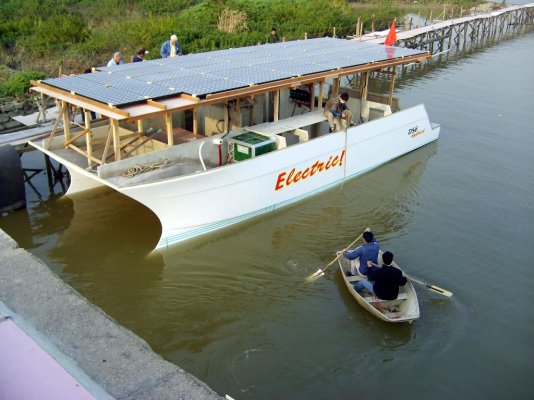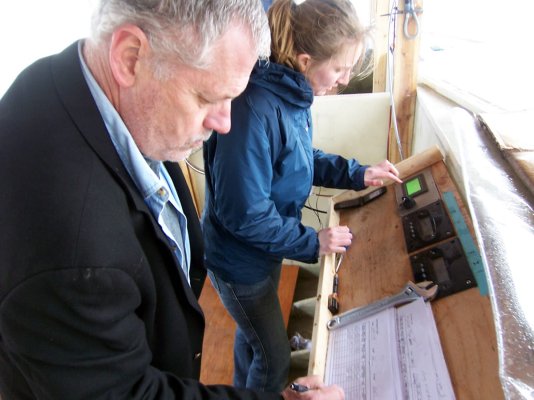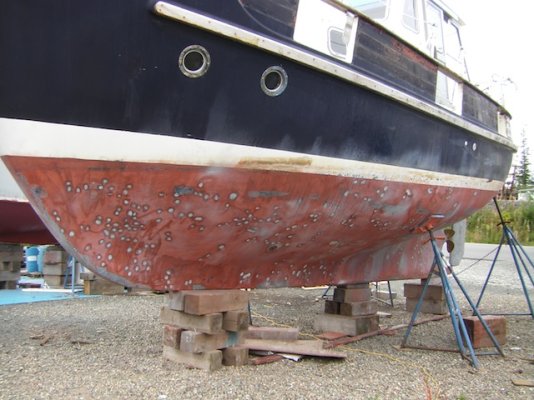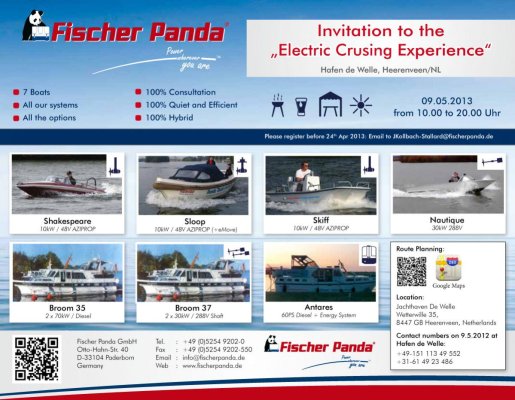Jeez! I go to sleep and awake to a plethora of posts! I am only sorry I never joined the debate club in school - it would certainly have proven of use over my lifetime. In my senior years, I tend to enjoy debate (much to my wife's consternation) and see NO subject as off limits. I love talking politics with those with ideas contrary to mine - likewise religion - and now boats! Let the conversation continue...
I don't know where to start?
Marin, you're up first: How many current cruising boats can you name that have a range of 600 nm at 13 knots? Or, better yet, how many boaters go 600 miles between stops? When is the last time you shopped new boats? One of the current best selling cruisers are those from Ranger Tugs - they have nailed it - a semi-displacement, trailable cruiser for around $200k for a bit shorter than 30' that sleeps 2 OK and 2 in the basement. Not at all efficient fuel-wise compared to other offerings of similar size, but at displacement speeds, as good as any. It is now possible to build a similar-sized e-boat for a similar price - main difference is it will have DIFFERENT PERFORMANCE, not necessarily less, just different. Slower? Yes. More spartan? Not really. Less range? No. Less range at a single leap? Yes. But total range is essentially infinite. So, it will appeal to a different segment of the market - but, well-designed and engineer, it will find a market. Maybe not in the hundreds, but in the dozens, enough to sustain a small boat builder.
Art: You say, the following is holding back development of hybrid boats "1. Energy-Charge acceptance rate/speed by batteries
2. Energy-Storage volume and energy release capability per battery pound
3. Energy-Charger efficiency per gallon of diesel fuel, or wind energy / solar energy capture and transfer"
Your #1 is here in LI batteries that can accept high rates of charge/discharge - with enough amps you can charge a fully discharged LI battery in half an hour.
Your #2 is where great sums of research time and capital are being expended - and we will never have a non-displacement battery boat until lighter, more dense storage solutions are created. That said, there is no reason to not continue with both self-sustaining displacement e-boats and fun, fast, planing runabouts (Cigarette has one BTW) that are plug-in.
Your #3 is half here already. PM motors/generators are 95% efficient - it's diesel technology (or other petroleum-based motors) where development needs to progress to meet this requirement of yours. Essentially your discussion of dollars per mile boils down to internal combustion technology and not hybrid technology. Yes, solar development moves at a snails pace - the best commercially available cells today are still around 22-23% efficient - something that improves only slightly from year to year.
AusCan: Yes, us seniors grew up with wrenches attached to our hands, a block and tackle on the oak tree and perpetual grease under our fingernails. But, with current modern diesels, there's not much a non-professional can do. Change the oil - change an impeller and serpentine belt - add coolant - change filters. That's about it. I had a high pressure fuel line go on my Volvo D6 several years ago. Luckily I had twins and was able to cruise safely to South Port NC. Parts were ordered and the local service tech effected the repair in an hour. Back in my younger years, on board "Skinny Dipper" (a Phil Bolger Black Skimmer I had built in my back yard) crossing the Gulf Stream in a single-handed race Miami-Bimini, I decided to while away some becalmed hours (see? Sailboats are not the ideal "green" solution) by rebuilding my Sea Gull outboard motor, which always could be made to run, but never could be made to run well! A couple hours later, using a pair of pliers and screwdriver, I had torn it down and put it back together. Those days are history for all but antique aficionados.
I have never thought of myself as a "tinkerer," but I am assuming that is a compliment and I will take it in the manner in which it was said. Island Pilot spent well over $1MM developing the award-winning DSe 12m - I have attached some photos of our "tinkering." You can see by the real-boat pix that at her design weight, she floated on her lines - of course, in our mistaken attempt to make the interior as luxurious as possible, we added a lot of add'l weight making what the water "saw" below the WL not at all pretty and sleek. From the model, you can see just how easily driven the design is (again at the design displacement). And, from the power/speed curve, you can get a good idea as to what our expectations were - if we got to six knots, it was almost "free" to go the additional know to seven (see the shoulder of the curve). But, to go any faster, 8 knot or better, energy requirements rose significantly. This is true of most any design - exceed the hull speed, and until you reach a plane, energy needs grow quickly. The goal was 6 knots at 6 kw - and as I recall, that is close to what we achieved in full-size sea trials. Interestingly, the curves for the tank test in Shanghai, the sea trials of the Glacier Bay version in Zhuhai and those of the Steyr version in Miami, ALL have the same characteristics and with scaling, can lay one on top of the other with only minor discrepancies other than the Y axis (power) which needed adjusting (upward). But relative power for each speed remained consistent.
Since many in this forum own full displacement boats, they have already made the decision to go slowly - 8 knots or less - in exchange for efficiency, creature comforts and range using diesel. In real life, there is not much difference between 6 and 8 knots. With a product that can use renewables, plug-in, and/or hybrid power, I have felt that this 6 knot sustainable goal could find a market - again, look to ex-sailors and other baby boomers with time to spare.
One thing not yet discussed in this thread is living on board at anchor (free of dockage costs and real estate taxes) indefinitely without starting an internal combustion motor to meet your energy needs while still have the ability to cruise along the coast or to the Bahamas. This is an intangible that cannot be measured in dollars but in quality of life.
Summing up - did we find a profitable market with our DSe 12m? Nope. Did we have sales? Yes. Unfortunately, these were in the fall of 2008 on the heels of the collapsing economy and many walked away from their contracts on more "normal" yachts, let alone our envelope-pushing DSe. Watching closely at the success of Ranger Tugs, I feel that their size/price is continuing to be viable - with the right package and price, I feel an e-boat will find a market.















